Many of us might be overspending unknowingly, with our hard-earned money slipping away in areas we seldom scrutinize. While it seems impossible to escape these inflated costs, plenty of alternatives and discounted rates are readily available.
Navigating these options can be a game-changer in managing our finances and squeezing the most value out of every dollar. Let’s delve into some of the key areas where you might be paying more than necessary and uncover the ways to spot and seize these potential savings opportunities.
Brand name products
Brand name products often come with a higher price tag merely due to the reputation of the brand, not necessarily because the product is of superior quality. We frequently shell out extra cash for this perceived value, even though equivalent or even better alternatives may exist at a fraction of the cost.
Generic or lesser-known brands can offer products that meet or even exceed the quality of their branded counterparts. A shift in shopping habits toward comparing product quality and price rather than leaning on brand recognition can lead to substantial savings.
Cable and satellite TV
With the advent of streaming services like Netflix, Hulu, and Amazon Prime, the necessity for costly cable and satellite TV packages is dwindling. Many households spend a significant sum on monthly TV subscriptions, often for hundreds of channels they barely watch. Moreover, these packages often include hidden fees, rental costs for equipment, and periodic rate hikes.
By switching to streaming services, which often offer more personalized viewing options, you can save on your monthly entertainment expenses. It’s worth taking a close look at your viewing habits and needs to see if a less expensive streaming service could replace your cable or satellite TV package.
Gym memberships
While fitness is important, it’s worth considering whether the cost of a premium gym membership is truly justified. Many gyms charge exorbitant fees and lock clients into long-term contracts with limited usage.
It’s not uncommon for individuals to underutilize their gym memberships, attending only a few times per month, neutralizing the cost-benefit ratio. Consider alternative fitness solutions like community centers, outdoor activities, or home workout equipment, which can still provide savings without compromising fitness goals.
Cell phone plans
Cell phone plans are another area where we frequently spend too much. Consumers often purchase premium packages with unlimited data, texts, and minutes without fully utilizing these features. In reality, many of us could suffice with a more modest package.
With the proliferation of Wi-Fi, the need for data has significantly declined. Therefore, it’s worth evaluating your usage patterns to see if a cheaper plan could meet your needs. Some service providers also offer discounts for family or multi-line plans that can further reduce costs if applicable to your situation. It’s crucial to regularly review your mobile usage and adapt your plan accordingly.
Prescription drugs
The soaring cost of medication in some regions, particularly the U.S., can pose a massive burden on the budget. What is worse, the price discrepancy between the same drug sold in different countries can be staggering. Many consumers may not be aware that the medicines they pay high prices for could be available at much lower costs through licensed international pharmacies.
We often pay more by sticking to branded medicines when therapeutically equivalent generic versions are available. By asking your healthcare provider for generic alternatives, comparing prices among several pharmacies, and looking into patient assistance programs offered by many drug manufacturers, you can potentially save substantial amounts on your prescription costs.
Bottled water
Despite the availability of clean tap water in many regions, there is a staggering reliance on bottled water, which often costs significantly more per gallon than gasoline. Besides the financial implications, plastic bottles’ environmental impact is another concern.
If necessary, investing in a reusable water bottle and a home water filter can lead to significant savings over time. Moreover, it promotes a more sustainable lifestyle by reducing plastic waste. Therefore, reevaluating our bottled water consumption can be a win-win situation that benefits our wallets and the environment.
Eating out
Whether it’s a quick lunch during a work break or a sumptuous dinner at a high-end restaurant, the costs of eating out can add up quickly. The convenience and experience of dining out sometimes make us forget the price tags associated with it. While there’s nothing wrong with treating yourself occasionally, regular visits to restaurants or fast-food chains can drain your budget.
One way to cut back without sacrificing the enjoyment of meals is to cook more at home. You can also try meal planning and prepping, which allow you to control your budget and ingredients while reducing food waste. So, the next time you think about dining out, consider the potential savings you could make by cooking at home instead.
Electricity bills
Numerous households unknowingly consume more electricity than necessary, leading to inflated monthly charges. A common culprit is the overuse of air conditioning and heating systems, which can drastically increase energy consumption, especially if these systems are old or inefficient.
Idle electronics continue to consume power even when not in operation. Additionally, inefficient lighting, such as traditional incandescent bulbs, consumes more electricity compared to energy-saving alternatives like LED or CFL bulbs.
A regular energy audit can help identify these issues and suggest appropriate solutions, such as replacing old appliances with energy-efficient ones, using smart power strips, or improving home insulation. We can significantly reduce our electricity bills by being conscious of our power usage and making small, sustainable changes.
Credit card interest
Charged when you carry a balance on your credit card beyond the grace period, credit card interest can accrue quickly, especially if only the minimum payment is made each month. Interestingly, many consumers overlook this cost, focusing instead on their card’s rewards, perks, or credit limits. However, with credit card interest rates hovering around 15-20 percent or more, these costs can significantly impact your financial health. Oftentimes, any rewards earned are negated by the interest paid when balances are carried over month-to-month.
The best way to avoid paying credit card interest is by paying off the balance in full each billing cycle. For those unable to do so, shopping around for a card with a lower interest rate or using a balance transfer card with zero interest can minimize the damage.
While it’s easy to fall into the trap of paying more than necessary for everyday items and services, a little effort and awareness can go a long way in managing our budgets more effectively. By recognizing areas where we tend to overspend, like prescription medicines, bottled water, dining out, electricity bills, and credit card interest, we can explore alternative strategies to cut costs without compromising on quality or convenience.
Saving money is not just about spending less but about spending wisely. So, let’s make informed decisions, adjust our consumption habits, and embrace a more budget-friendly and sustainable lifestyle.
The blog post above was shared from BALANCE. For more information and similar resources, click here .





